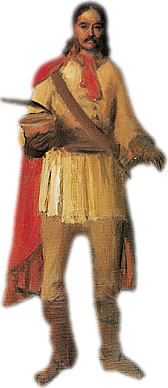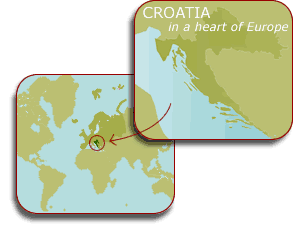|
 Many events in the history of mankind eventually fade into oblivion, but others, leave their indelible marks for the entire world to see. More than 350 years ago, the Croats initiated one such influential occurrence. Although started in the 17th century in a small region on the Adriatic coast, the consequences of this event are still very much evident the world over. 600 million people now wear the ubiquitous symbol of Croatia around their necks, close to their hearts.
Many events in the history of mankind eventually fade into oblivion, but others, leave their indelible marks for the entire world to see. More than 350 years ago, the Croats initiated one such influential occurrence. Although started in the 17th century in a small region on the Adriatic coast, the consequences of this event are still very much evident the world over. 600 million people now wear the ubiquitous symbol of Croatia around their necks, close to their hearts.

Did you know that Croatia is the mother country of the necktie?
In his book, La Grande Histoire de la Cravate (Flamarion, Paris, 1994), François Chaille tells us about the appearance of this article of clothing and how it became fashionable.
"... Around the year 1635, some six thousand soldiers and knights came to Paris to give their support to King Louis XIII and Cardinal Richelieu. Among them were a great number of Croatian mercenaries led by a ban, or Croatian viceroy.
The traditional outfit of these Croats aroused interest on account of the unusual and picturesque scarves distinctively tied about their necks. The scarves were made of various cloths, ranging from coarse material for common soldiers, to fine cotton and silk for officers. This elegant "Croatian style" immediately enamoured the French, who were delighted by the new article of clothing, which had been previously unknown in Europe.
For the gallant French officers in the thirty-year war, the advantage of the Croatian neck scarf was its enviable practicality. In contrast to the lace collar that had to be kept white and carefully starched, the scarf was simply and loosely tied around the neck without need for any additional care. Just as elegant as the stiff, high collars, the new scarves were less awkward, easier to wear and remained visible beneath the soldiers’ thick, long hair.
 Around the year 1650, during the reign of Louis XIV, the Croatian scarf was accepted in France, above all in court, where military ornaments were much admired. The fashionable expression, ’a la croate’, soon evolved into a new French word, which still exists today: la cravate. This innovation symbolized the height of culture and elegance. On his return to England from exile, Charles II brought with him this new word in fashion. Over the next ten years, this fashion novelty spread across Europe, as well as across the colonies on the American continent..."
Around the year 1650, during the reign of Louis XIV, the Croatian scarf was accepted in France, above all in court, where military ornaments were much admired. The fashionable expression, ’a la croate’, soon evolved into a new French word, which still exists today: la cravate. This innovation symbolized the height of culture and elegance. On his return to England from exile, Charles II brought with him this new word in fashion. Over the next ten years, this fashion novelty spread across Europe, as well as across the colonies on the American continent..."
Since that time in the 17th century, derivatives of the word croata have been present in many languages, (i.e., English, German, French, Portuguese, Italian), meaning cravat or tie. It follows then that Croatia is the mother country of the necktie, as France is the mother country of high fashion, Brazil of coffee, Switzerland of cheese and watches, Portugal of port…
For those who are looking for an authentic Croatian necktie, all roads lead to Zagreb.
Article Source: http://www.croata.hr/homeland/index.php